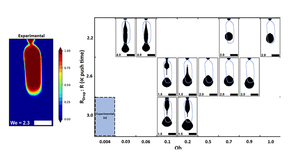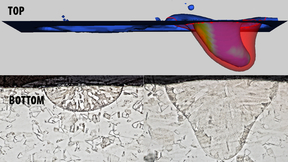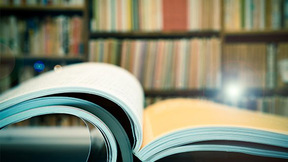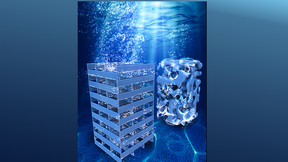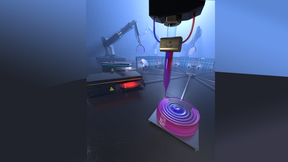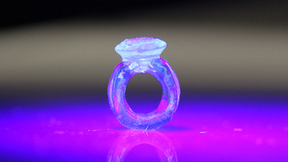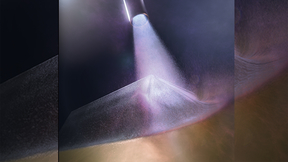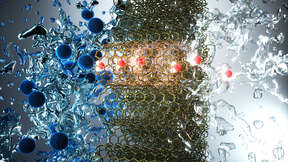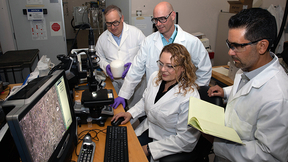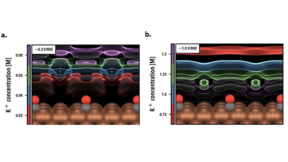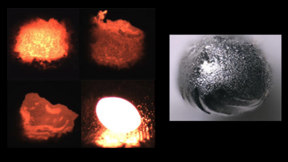Back
A team of Lawrence Livermore National Laboratory (LLNL) scientists has simulated the droplet ejection process in an emerging metal 3D printing technique called “Liquid Metal Jetting” (LMJ), a critical aspect to the continued advancement of liquid metal printing technologies. In the paper, the team describes the simulating of metal droplets during LMJ, a novel process in…
Lawrence Livermore National Laboratory (LLNL) researchers have taken a promising step in improving the reliability of laser-based metal 3D printing techniques by measuring the emission of electrons from the surface of stainless steel during laser processing. Researchers collected thermionic emission signals from 316L stainless steel under laser powder bed fusion (LPBF)…
Sydney Barber, former intern at Lawrence Livermore National Laboratory (LLNL), is making history at the United States Naval Academy. It was recently announced that 1st class midshipman Barber will become brigade commander next semester, the highest leadership position in the brigade, making her the first Black woman to be named in the role. The first female brigade…
Fifty-seven researchers from Lawrence Livermore National Laboratory (LLNL) were among the top 2 percent of the most cited researchers worldwide throughout their careers, according to research on metascience by Stanford University. Metascience is the "study of studies" using scientific methods. Stanford University professor John Loannidis worked alongside U.S.-based Kevin…
Alkaline water electrolysis has been touted as a path to establish a hydrogen economy by converting intermittent renewable energies into clean hydrogen-based chemical energy. However, current technology has achieved only low current densities and voltage efficiencies. To make electrolysis more resourceful, a Lawrence Livermore National Laboratory (LLNL) team partnered with…
Lawrence Livermore National Laboratory (LLNL) researchers have used multi-material 3D printing to create tailored gradient refractive index glass optics that could make for better military specialized eyewear and virtual reality goggles. The new technique could achieve a variety of conventional and unconventional optical functions in a flat glass component (with no surface…
Two teams of Lawrence Livermore National Laboratory (LLNL) scientists and engineers, each supported by a Lab business development executive, have garnered regional awards for technology transfer. This year’s awards, one for outstanding technology development and the other for an outstanding partnership, will be presented next week during the Federal Laboratory Consortium’s…
Five Lawrence Livermore National Laboratory (LLNL) employees, including Director Bill Goldstein, will play key roles in the sixth annual Bay Area Battery Summit (BABS) slated to be held virtually next week. This year’s sixth annual BABS, co-sponsored by LLNL, New Energy Nexus and CalCharge, will draw together investors, policymakers, researchers and entrepreneurs with an…
A Lawrence Livermore National Laboratory (LLNL) team has simulated the cross-linking of 3D-printed polymer networks, a key step toward developing new functional resins for light-based 3D-printing techniques including two-photon lithography (TPL) and volumetric additive manufacturing (VAM). The team used molecular dynamics simulations to study, at a microscopic level, the…
Researchers at Lawrence Livermore National Laboratory (LLNL) have adapted a new class of materials for their groundbreaking volumetric 3D printing method that produces objects nearly instantly, greatly expanding the range of material properties achievable with the technique. The class of materials adapted for volumetric 3D printing are called thiol-ene resins, and they can…
Lawrence Livermore National Laboratory (LLNL) researchers are among the developers of the top 100 industrial inventions worldwide, winning an R&D 100 award at this year’s annual event. The trade journal R&D World Magazine announced the winners of the awards, often called the “Oscars of invention,” during a virtual event and on the magazine’s website. With this year…
Four Lawrence Livermore National Laboratory (LLNL) scientists have been selected as 2020 fellows of the American Physical Society (APS). The new fellows represent a selection of physics expertise, ranging from laser plasma physics to magnetic fusion plasmas, to theoretical and computational understanding of plasma interactions and soft X-ray and free electron laser…
To solve a 100-year puzzle in metallurgy about why single crystals show staged hardening while others don’t, Lawrence Livermore National Laboratory (LLNL) scientists took it down to the atomistic level. The research appears in the Oct. 5 edition of Nature Materials. For millennia, humans have exploited the natural property of metals to become stronger or harden when…
Methane hydrate is a crystalline solid formed from methane gas and water that occurs naturally in the seafloor of the continental shelves worldwide. Hydrate is considered a source of natural gas, a natural hazard or a potential contributor to ocean acidification and climate change. Its presence lowers the electrical conductivity of the seafloor in comparison to hydrate…
Membrane separations have become critical to human existence, with no better example than water purification. As water scarcity becomes more common and communities start running out of cheap available water, they need to supplement their supplies with desalinated water from seawater and brackish water sources. Lawrence Livermore National Laboratory (LLNL) researchers have…
A shape memory foam material developed by Lawrence Livermore National Laboratory (LLNL) researchers is the foundation of a lifesaving medical device that has won a national technology transfer award. Researchers from LLNL, Santa Clara-based Shape Memory Medical Inc. and Texas A&M University incorporated the foam technology into the IMPEDE® Embolization Plug that…
In another month-and-a-half, a score of chemists from Lawrence Livermore National Laboratory's Forensic Science Center (FSC) will start two weeks of long days to undertake the Organization for the Prohibition of Chemical Weapons (OPCW) environmental proficiency test. Livermore chemists have been taking the proficiency tests each October since 2001, with LLNL serving as one…
In addition to maintaining its Organization for the Prohibition of Chemical Weapons (OPCW) laboratory designation for analyzing suspect environmental samples, LLNL also is an OPCW-designated laboratory for the analysis of biomedical samples. (See "Lab earns 'A' in OPCW test) In this instance, OPCW inspectors have the ability to collect biomedical samples for cases of…
The electrochemical conversion of CO2 into chemical fuels and other commodity products is an attractive strategy for mitigating carbon emissions while offsetting the use of fossil resources. Nevertheless, the adoption of such approaches in industrial settings has been limited by the poor efficiency and selectivity of the electrochemical cells that are used to drive CO2…
Producing gram quantities of uranium metal in a controlled manner by traditional methods is challenging due to the complex chemistry of precursor material and extreme thermal requirements. In a recent study, LLNL researchers demonstrated a novel approach that combines modeling and an advanced experimental technique for extracting uranium from a uranium-containing compound…

